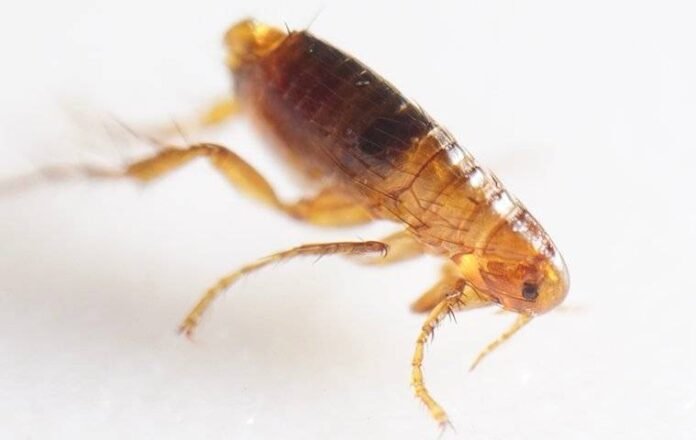Introduction to Flea Control
Flea control in west Chester pa is a crucial aspect of maintaining a healthy environment for both pets and humans. These tiny, blood-sucking parasites not only cause discomfort to our furry friends but also pose health risks to everyone in the household. Understanding how to effectively control fleas is essential for preventing infestations and safeguarding against potential health issues.
Understanding Fleas and Their Behavior
Fleas are small, wingless insects that feed on the blood of mammals and birds. Their lifecycle consists of four stages: egg, larva, pupa, and adult. Fleas thrive in warm and humid environments, with common habitats including carpets, upholstery, bedding, and outdoor areas frequented by pets.
Signs of Flea Infestation
Detecting a flea infestation early is crucial for effective control. Signs may include excessive scratching and biting in pets, visible flea dirt on fur, and tiny black specks (flea feces) on bedding and furniture.
Health Risks Associated with Fleas
Fleas can transmit various diseases to both animals and humans, including flea allergy dermatitis, tapeworm infestations, and even bubonic plague in extreme cases. Allergic reactions to flea bites can also cause severe itching and discomfort.
Importance of Flea Control
Implementing flea control measures is essential not only for the comfort of pets but also for preventing the spread of diseases and maintaining a hygienic living environment.
Methods of Flea Control
There are several methods available for controlling fleas, ranging from preventive measures to chemical treatments. Preventive measures include regular grooming of pets, maintaining a clean living environment, and using natural repellents such as diatomaceous earth and essential oils.
Chemical treatments, such as flea collars, topical spot-on treatments, and oral medications, are also commonly used to eradicate existing infestations and prevent reinfestation.
Flea Control for Pets
Various products are available for controlling fleas on pets, including flea collars, shampoos, oral medications, and spot-on treatments. These products work by either killing adult fleas or disrupting their lifecycle to prevent reproduction.
Flea Control for the Home
In addition to treating pets, it’s essential to address flea infestations in the home environment. This may involve thorough vacuuming and cleaning of carpets, upholstery, and bedding, as well as using flea bombs or foggers to eliminate adult fleas and their larvae.
For severe infestations, professional pest control services may be necessary to effectively eradicate fleas from the home.
Environmental Considerations in Flea Control
When choosing flea control products, it’s essential to consider their environmental impact. Eco-friendly options, such as botanical insecticides and natural repellents, offer effective alternatives to chemical treatments while minimizing harm to non-target organisms.
Tips for Effective Flea Control
- Regularly vacuum and clean your home, paying special attention to areas frequented by pets.
- Wash pet bedding and other fabrics in hot water to kill flea eggs and larvae.
- Use preventive measures, such as flea collars and topical treatments, to protect pets from infestations.
- Monitor pets closely for signs of flea infestation, and consult a veterinarian if necessary.
- Consider the environmental impact of flea control products and opt for eco-friendly alternatives when possible.
Conclusion
Flea control is essential for protecting both pets and humans from the discomfort and health risks associated with flea infestations. By understanding flea behavior, implementing preventive measures, and utilizing effective control methods, it’s possible to create a flea-free environment that promotes the health and well-being of all household members.
Frequently Asked Questions (FAQs)
- What are the most common signs of flea infestation in pets?
- The most common signs of flea infestation in pets include excessive scratching and biting, red or irritated skin, visible flea dirt (tiny black specks) on the fur, and the presence of live fleas or flea eggs.
- Are natural flea control methods as effective as chemical treatments?
- Natural flea control methods can be effective for mild infestations and as preventive measures. However, they may not always provide the same level of efficacy as chemical treatments for severe infestations. It’s essential to assess the severity of the infestation and consult with a veterinarian for the most appropriate treatment options.
- How often should I treat my pet for fleas?
- The frequency of flea treatment for pets depends on various factors, including the pet’s susceptibility to fleas, the prevalence of fleas in the environment, and the effectiveness of the chosen flea control method. In general, it’s recommended to follow the instructions provided by the product manufacturer or consult with a veterinarian for guidance on the appropriate treatment schedule.
- Can fleas transmit diseases to humans?
- Yes, fleas can transmit diseases to humans through their bites. Some of the diseases transmitted by fleas include flea allergy dermatitis, murine typhus, and bubonic plague. While the risk of disease transmission from fleas to humans is relatively low, it’s essential to take preventive measures to avoid flea bites and maintain a flea-free environment.
- What should I do if I suspect my home is infested with fleas?
- If you suspect your home is infested with fleas, it’s essential to take immediate action to control the infestation. Start by thoroughly cleaning and vacuuming the affected areas, including carpets, upholstery, and pet bedding. Consider using flea control products such as flea bombs or foggers to eliminate adult fleas and their larvae. If the infestation persists, or if you’re unsure how to effectively control it, consider seeking professional pest control services for assistance.


